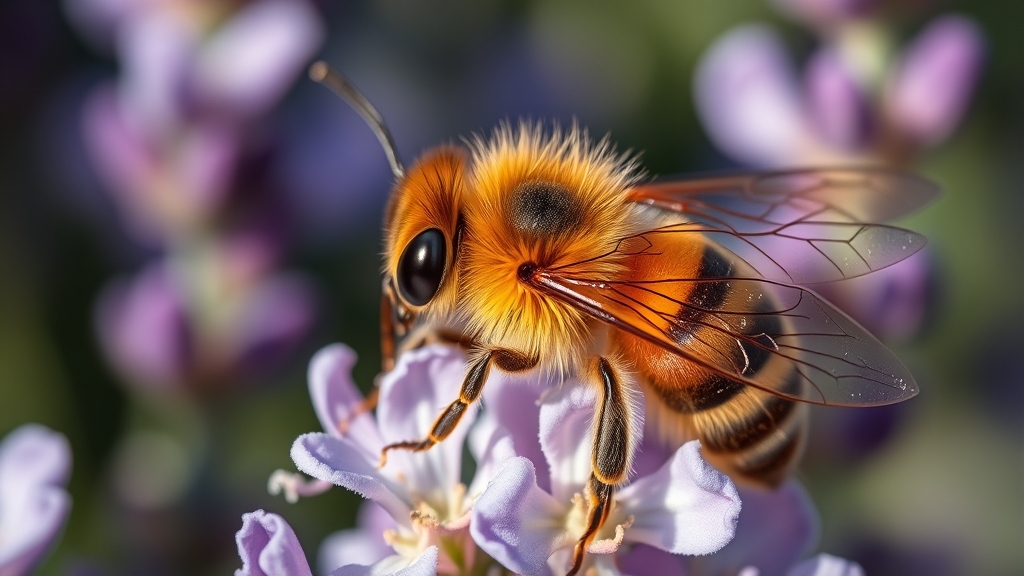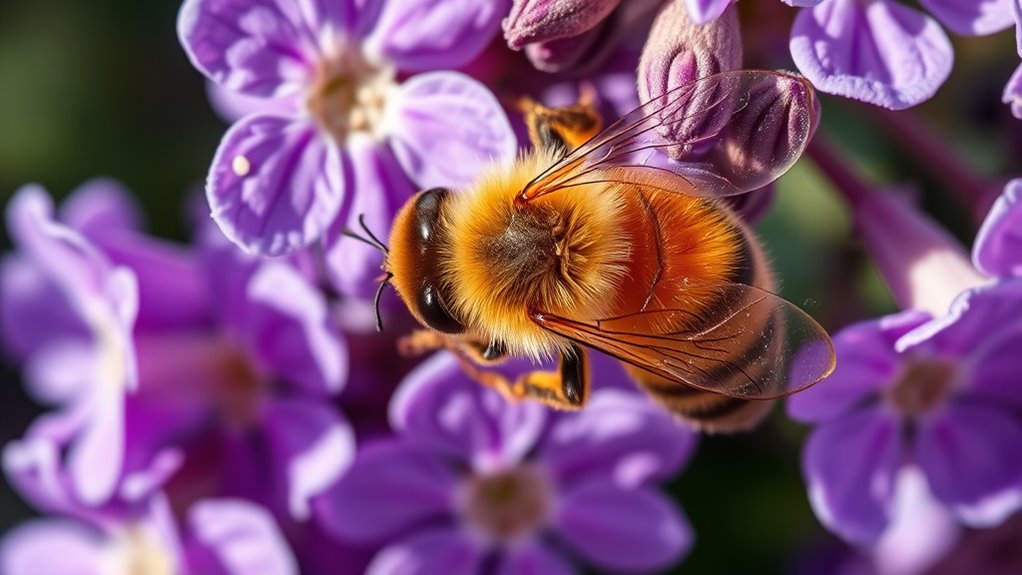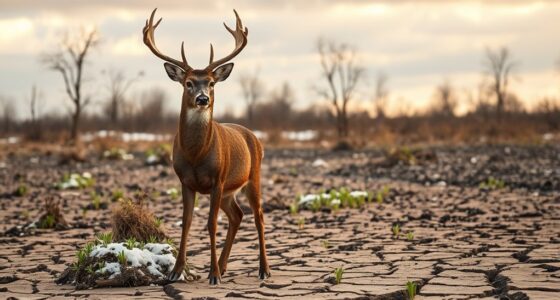Bees might be tiny, but their impact is enormous. They pollinate about 75% of flowering plants, including most foods you enjoy like fruits and vegetables. By transferring pollen from flower to flower, they support healthy ecosystems and agricultural productivity. Sadly, threats like pesticides and habitat loss are causing bee populations to decline rapidly. Protecting these remarkable pollinators is essential for your food security and the planet’s health. Discover more about how you can help these crucial creatures.
Key Takeaways
- Bees are essential pollinators that fertilize a majority of flowering plants, supporting both wild ecosystems and agriculture.
- Their pollination process enables the production of fruits, vegetables, and seeds vital for human food supplies.
- Threats like pesticides, habitat loss, and climate change cause colony collapse disorder, threatening bee populations worldwide.
- Protecting bees through habitat conservation and sustainable practices is crucial for maintaining biodiversity and food security.
- Supporting beekeeping and raising awareness helps ensure the health of bee populations and the ecosystems they sustain.

Have you ever wondered how tiny insects like bees have such a huge impact on our world? These small creatures are essential pollinators, responsible for fertilizing a large portion of the plants we rely on for food. When bees visit flowers, they transfer pollen from one bloom to another, enabling plants to produce fruits, vegetables, and seeds. This process, known as pollination, is indispensable for maintaining healthy ecosystems and supporting agriculture. Without bees, many crops would struggle to reproduce, leading to decreased food availability and reduced biodiversity.
You might be surprised to learn that bees also produce honey, a natural sweetener that has been valued by humans for thousands of years. Honey production begins when worker bees collect nectar from flowering plants, then bring it back to the hive. Inside, they deposit the nectar into honeycombs and fan it with their wings to evaporate excess moisture. This process transforms the nectar into thick, sticky honey, which serves as a critical food source for the colony, especially during winter months when foraging is limited. Honey isn’t just delicious; it’s a remarkable example of how bees turn a simple plant product into a nourishing resource through complex teamwork and natural processes.
However, despite their importance, bees face significant threats that threaten their survival and, consequently, our food systems. One of the most concerning issues is colony collapse disorder (CCD), where entire bee colonies suddenly disappear. During CCD, worker bees abruptly abandon the hive, leaving behind the queen, larvae, and food stores. This phenomenon has baffled scientists and caused alarm because it leads to the rapid decline of bee populations. The causes of CCD are complex and include factors like pesticides, habitat loss, climate change, and diseases. When colonies collapse, it disrupts pollination worldwide, impacting everything from wild plants to commercial crops.
As a person who depends on the products and diversity that bees help sustain, you should recognize their immense value. Protecting bees means safeguarding their habitats, reducing pesticide use, and supporting sustainable agricultural practices. When bees thrive, they continue their indispensable work of pollination, honey production, and maintaining healthy ecosystems. Their small size belies their powerful influence, reminding you that even the tiniest creatures can have a profound impact on the planet’s well-being. By understanding their struggles and contributions, you can help guarantee that bees remain a thriving part of our world for generations to come. Protecting bee populations is essential for ensuring the continued health of ecosystems and food security. Additionally, understanding the pollination process can help us appreciate their vital role in agriculture. Recognizing the importance of habitat preservation can further support their survival and the ecological balance they help maintain. Supporting beekeeping practices and promoting awareness can also contribute significantly to their conservation.
Frequently Asked Questions
How Do Bees Communicate With Each Other?
You might wonder how bees communicate. They use bee dances, like the waggle dance, to share information about food sources, indicating direction and distance. Pheromone signals also play a vital role, helping bees alert each other to danger or mark trails. When you observe a hive, you’ll notice these behaviors as essential for coordinating activities and maintaining colony harmony. These methods make bees highly effective communicators in their environment.
What Are the Different Species of Bees Worldwide?
You might be surprised to learn about the incredible bee species diversity worldwide, from honeybees to bumblebees and solitary bees. Each species plays unique pollination roles, ensuring plant reproduction and ecosystem health. Coincidentally, this diversity reflects nature’s adaptability, reminding you how crucial every bee is in maintaining balance. Exploring these different bee species helps you appreciate their essential contributions and the importance of protecting their habitats.
How Long Do Worker Bees Typically Live?
You might wonder about bee lifespan, especially worker bee longevity. Typically, worker bees live around 4 to 6 weeks during the active season, as their lifespan is quite short due to their demanding roles. However, if they survive the winter, their longevity can extend up to several months. Factors like environment, health, and season influence how long a worker bee lives, making their lifespan quite variable.
Can Bees Survive Without Human Intervention?
Imagine a delicate mosaic, each piece essential for the whole. Bees can survive without human intervention if they find natural hive structures and enough resources. In the wild, they thrive through instinct and adaptation. However, bee conservation efforts help protect these natural habitats, ensuring bees continue to pollinate and maintain ecological balance. Your support in preserving natural environments sustains their survival, making them less dependent on human intervention.
What Are the Signs of a Healthy Bee Colony?
You can tell a bee colony is healthy when you see robust honey production and active hive maintenance. Bees work tirelessly, keeping the hive clean and ensuring the queen is surrounded by plenty of worker bees. Look for a steady flow of activity, a well-formed brood, and abundant honey stores. These signs show the colony’s thriving, resilient, and capable of supporting itself with minimal intervention.
Conclusion
Just like the bees in the stories of the Garden of Eden, your actions can nurture or harm these tiny pollinators. Remember, without their diligent work, our world’s lushness and life depend on their wings. By protecting bees, you’re safeguarding a essential chapter in nature’s endless story—a story as old as time itself. So, choose to be a guardian of these small but mighty creatures, ensuring their legacy continues to bloom for generations to come.






